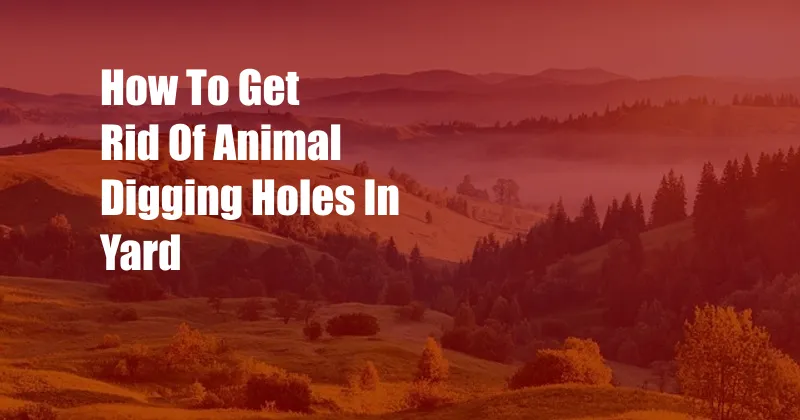
How to Stop Animals From Digging Holes in Your Yard
You emerge from your home with a steaming cup of coffee, ready to soak in the beauty of your freshly mowed lawn. But your tranquility is broken by an unsightly sight: holes dotting your yard, the handiwork of burrowing animals. Don’t let these uninvited guests ruin your outdoor paradise; learn how to effectively deter them.
Understanding these animals’ motivations is the key to combating their excavations. From foraging for food to seeking shelter, each species has its reasons for digging. Understanding their behavior will help you develop tailored solutions.
Types of Yard-Digging Animals
Several animal species can become culprits of yard excavations. Identifying the specific animal responsible will help you determine the best methods for deterring them:
- Dogs: Burying bones and seeking cool spots are common reasons for canine digging.
- Raccoons: These nocturnal scavengers dig for insects, grubs, and other food sources.
- Squirrels: Squirrels bury nuts and seeds, sometimes leading to excessive digging in yards.
- Armadillos: Their long, curved claws make them efficient diggers, searching for insects and other invertebrates.
- Gophers: These small rodents live in underground burrows and create mounds of dirt as they tunnel.
Proven Strategies to Protect Your Yard
Armed with knowledge about the potential culprits, let’s delve into effective ways to deter them from digging:
1. Motion-Activated Sprinkler
Sudden blasts of water can startle animals and discourage them from approaching your yard. Choose a motion-activated sprinkler and position it strategically to cover the areas most vulnerable to digging.
2. Fencing and Barriers
Physical barriers can effectively prevent animals from entering your yard. Install a fence or dig a trench around the perimeter, ensuring that the barriers are buried deep enough to prevent burrowing.
3. Natural Repellents
Certain scents and tastes can deter animals. Spread cayenne pepper, garlic powder, or citrus peelings around the areas where digging occurs. Note that these repellents may need to be reapplied regularly.
4. Ultrasonic Devices
Ultrasonic devices emit high-frequency sounds that are inaudible to humans but can annoy animals. Place these devices in the yard to create an uncomfortable environment for digging.
5. Professional Wildlife Removal
If other methods fail to resolve the issue, consider contacting a professional wildlife removal service. They can humanely trap and relocate the offending animals.
Expert Tips for Success
To enhance your efforts, follow these expert tips:
- Consistency is key: Be diligent in applying deterrents and monitor the situation regularly.
- Identify patterns: Observe when and where animals are digging most frequently to tailor your strategies accordingly.
- Eliminate attractions: Remove sources of food or shelter in your yard that may attract animals.
FAQs on Yard-Digging Animals
- Q: Are there any non-toxic deterrents for yard-digging animals?
A: Yes, natural repellents such as cayenne pepper and citrus peelings offer non-toxic solutions. - Q: How deep should I bury a fence to prevent animals from digging under it?
A: Bury the fence at least 12 inches deep, ensuring it extends beyond the frost line to deter tunneling.
Conclusion
Preserving the beauty of your yard from the effects of digging animals requires a proactive approach. By implementing the effective strategies outlined in this article, you can deter these uninvited guests and reclaim your tranquil outdoor space. Whether you choose motion-activated sprinklers, physical barriers, or natural repellents, remember to maintain consistency in your efforts and adapt your methods to the specific animal responsible for the digging.
Are you facing challenges with yard-digging animals? Share your experiences and questions in the comments below, and let’s work together to find effective solutions for a beautiful and animal-friendly yard.